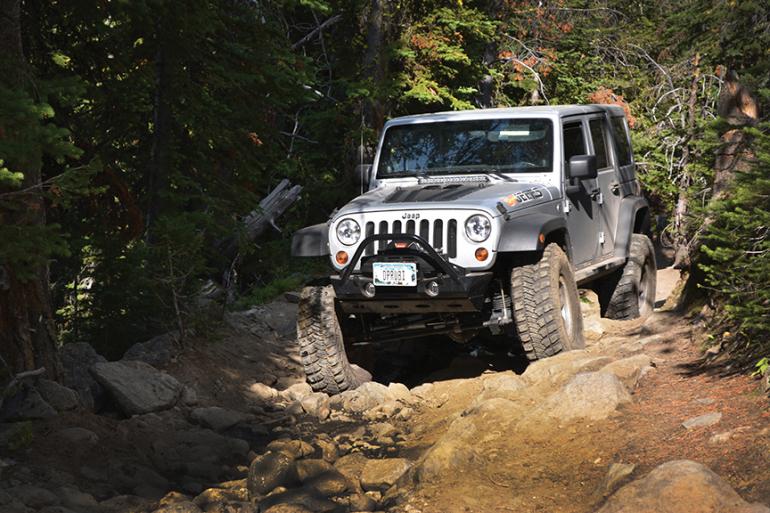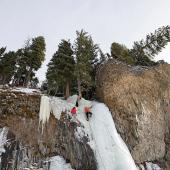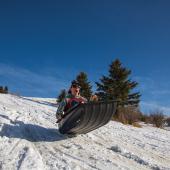Motor Ahead
Outfitting your backcountry rig.
If you’ve ever found yourself sitting nervously in your trusty steed on your way to a forest service campsite deep down a mountain road, you’ve probably had that feeling in your gut that beckons the question, “Will I make it?” Given the terrain and obstacles we Montanans face on any given hunting expedition or backcountry adventure, it’s important to ensure that the next time you face that road, you can say, “No problem.” Here are three important areas to consider.
Traction
Traction comes from several different areas, and the easiest way to gain it is by picking the right tires. Highway tires are designed specifically for “hard top” surfaces like asphalt, and therefore aren’t sufficient for even a wet dirt road. Mud-terrain tires are designed for maximum traction in the soft stuff, and that means mud, sand, and snow. They’re being used more and more for on-road driving as well, so manufacturers have upgraded them for daily use. All-terrain tires are the love-child of these two options, and are on most pickups and SUVs around here.
With your tire choice settled, it’s time to focus on adequate traction. We all have some type of “differential” in our axle assemblies that allows one tire to turn independently of the other, mostly for cornering. When cornering, the inside tire wants to turn slower than the outside tire, and it takes differential to do that. Without some sort of device to lock the two tires together, we lose momentum to the tire with the least amount of traction. Lockers, both automatic and on-demand, can prevent this. While costly, they’re the best tool for the serious backcountry traveler for maximum grip at all times.
Clearance
Let’s take a Toyota Tundra as an example as there are plenty of them around. Tundras typically have the best “ground clearance” out of the light-duty lineup of trucks at around ten inches. This will hardly get you over your neighbor’s rosebush, let alone through a small winter drift on Cottonwood Rd., so how do we solve that? Suspension height and tire height. Tire height will afford the most useful type of clearance as it puts more room under the lowest-lying area of most vehicles: the axles. The height of your tire is limited to clearance in the wheel wells, and this is where increasing your suspension height comes into play. Lifting your truck or SUV isn’t reserved solely for Bro-Dozing Main Street, but it is great tool for preparing your vehicle for an off-road adventure (if done correctly). It allows room for increased tire height, and increases the under-frame clearance, effectively helping you avoid “high-centering” your outfit. There’s a right way and a wrong way to lift your vehicle, so be sure to ask the experts how they would outfit their rides.
Plan B
I don’t care how well-equipped your vehicle is, Mother Nature has a plan for you, so be prepared. The ability to “recover” your vehicle may be the most important thing in your rig’s arsenal, so here are three items that every prepared vehicle should have: a winch or winching device; a good set of straps / tow ropes; and knowledge on how to use it all.
A well set up vehicle can offer the type of confidence it takes to get really out of town, really safely. It takes experience and a mechanical mind to suggest the right components, so don’t be bashful. Call your local performance and off-road shop to make your vehicle ready for Montana’s what-ifs.
Gary Fields and his wife Ashley own Diesel PROS and DP Jeeps in Bozeman. Reach them at (406) 551-2777.









